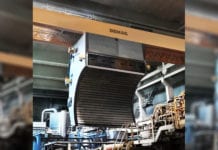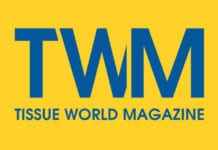Tightening availability and increasing prices of ‘white’ recovered fibre are impacting the developments of the tissue fibre furnish while recovered fibre usage concentrates on brown grades. Here, Pirkko Petäjä, principal at Pöyry Management Consulting, explains how it is affecting the tissue industry.
Global recovered fibre consumption has historically clearly grown faster than virgin fibre usage. By 2010, recovered fibre represented 55% of the total raw material volume for paper, while virgin fibre pulps had a 41% share and non-wood pulps stood for 4%. The world is still counting on an increased supply of recycled fibre, but the massive volume growth in demand for brown recycled fibre has buried the story of white fibre supply challenges.
Recovered paper consumption and collection are expected to grow globally by almost 60 million tonnes until 2020. Most of the consumption growth will take place in China, where OCC (Old Corrugated Containers, ‘brown’ RCF) is used for packaging grades. HG/PS (High grades/Sorted Office Paper, ‘white’ RCF used in tissue) consumption is projected to grow 4.4 million tonnes. The increasing supply will be reached by growing consumption of woodfree papers in the developing regions and increasing collection rates in all regions.
Recovered fibre availability worsens, especially for the ‘white’ grades
Collection rates are estimated to reach almost theoretical maximum limits by 2020 which likely will increase recovered paper prices because of higher collection costs. Theoretical maximum collection rate for total RCF is 80-81 % (for HG separately clearly lower than that for OCC and Old News and Mags), the world average for the total rate is currently approaching 60%.
The decline in graphic paper consumption in the industrialised world and slowing down of the growth in emerging economies will seriously limit the availability of RCF in ONP/ OMG and High Grades. The impact is greatest in Europe, in the US and in the international trade of RCF. Potentially printing and writing paper demand might decrease in developed regions even more than anticipated. Due to the fibre flow from printing and writing papers to tissue and packaging grades, the demand for ONP/OMG and HG RCF continues to increase tightening the balance significantly. There is very limited possibility to increase RCF share in the ‘white’ grades.
Prices of recovered fibre show an upward trend even in real terms
The rising collection costs are the main price driver, together with the tightening supply/demand balance. As the collection rate increases, the collection cost goes up – it can be exponentially (longer transportation distances, smaller volumes per lot, more advanced sorting, etc). For the users of recovered paper, reject disposal and other usage related costs are also rising which gradually makes virgin fibres relatively more attractive, even if the nominal price difference is still high for many pulp substitution grades.
Recovered paper quality is also deteriorating and expected to deteriorate further. Deteriorating RCF quality increases the cost for the user (lower yield, higher processing costs and lower quality end product). Tissue industry has lower paying capability of RCF than many other users. The tissue industry has lower paying capability than other end users and thus is foreseen to relatively increase the use of virgin fibres.
High quality RCF-based tissue products can only be made with highly bleached deinked pulp (DIP). The high bleaching requirements as well as the fact that the filler/coating contained in many graphic papers is to large extent rejected, lead to a low yield, at some 65-70%, in the deinking process. Due to the low yield, tissue producers’ RCF paying capability is lower compared to the producers of some other paper grades where the filler (or coating) is not rejected. In addition, the raw materials required for the high brightness products are high and medium grades of RCF (e.g. sorted office paper), which have the highest prices and fastest deteriorating quality and availability among RCF grades.
Products/producers with best paying capability (white surface boards and printing and writing papers) will not see those big changes in furnishes while products with lower paying capability are expected to see furnish changes, from RCF to virgin based. In tissue furnish, RCF is increasingly foreseen to be replaced by virgin pulp.
Who demands recovered fibre?
Desired fibre properties determine the basic fibre furnishes and tissue producer’s main emphasis is on end- product quality. This drives the raw material choice. Price, certification and other environmental issues are also important but still secondary. Especially in selected markets the environmental argumentation and certification has become a requirement set to the tissue producers and in these regions the fibre choice is no longer purely an economic or quality question.
The stakeholders in the environmental front include tissue companies themselves, environmentalists/ non-governmental organisations (NGOs), retailer chains, governments, institutions and other public buyers as well as final consumers that can be corporates or individual buyers. Environmental requests are much more driven by retailers, NGO’s and institutional buyers than by the final consumers. The existing respected environmental certificates and labels in tissue are often programmes which address multiple environmental attributes and provide a rather comprehensive assessment of the overall environmental impacts of the product.
Few labels require 100% RCF content but at least partial RCF content may be the requirement of some institutional, governmental and public buyers. This is especially impacting AfH furnish and is not expected to change. AfH furnish is not predicted to ‘virginise’, partially due to the demand but also as there are less quality requirements and economic pressure towards virgin furnish in the segment. RCF is still holding its position as the primary raw material for the lower quality, lower- priced tissue products, which are not economically viable to produce from virgin pulp. The yield of RCF based pulp (not necessarily deinked) used in the low brightness products is higher due to lower washing and bleaching requirements. In addition, these kinds of products mainly contain the cheaper RCF grades.
Also retailers may require RCF content for part of the products. There is also a debate of the willingness of consumers or the retailers to pay for the RCF content if they require it. Some tissue producers believe this is possible by 2020, others say that in the worsening economic situation this will not happen, in a better economic climate maybe. Several consumer surveys indicate, that though the majority of consumers claim that the raw materials influence their buying decision, only some 20% are willing to pay for ‘eco friendliness’.
Which is the most sustainable fibre?
The growing spectrum of environmental labels that certify also virgin fibre-based products means that the ecological benefits of using certain sources of virgin fibre are being increasingly recognised. It is not only the origin of fibre that determines the eco-friendliness of the tissue products, also sustainability aspects in the tissue process and in the mill need to be considered. Especially water and energy consumption and energy supply concept are important sustainability issues. Fight against climate change should be seen as equally important as the fibre origin.
The specific water consumption of RCF based tissue manufacturing is significantly higher than that for virgin fibre-based tissue – the best technologies limit virgin tissue water consumption in extreme cases to only some 2-3 m3/tonne, while good standard is 4-5 m3/t; in the RCF based tissue the consumption is at its minimum double. Effluent quality is also more ‘difficult’ in the RCF based process. Sludge after RCF handling and de-inking is a clear environmental concern; it typically goes to landfill that in many places starts to be restricted. Also sludge incineration has been opposed due to environmental reasons. Specific energy consumption is typically higher for the RCF based process than virgin process.
The recent focus on non-wood fibre originates also from environmental concerns. The focus is entirely on the origin of fibre and the other environmental attributes are neglected. One cannot be convinced that for instance bamboo can be seen as a more sustainable fibre as there are many attributes which remain neglected.
Summary
While ‘brown’ recycled fibre consumption for board is typically still increasing, ‘white’ recovered fibre availability is significantly tightening and the price of the fibre is increasing due to increasing collecting costs. Tissue has lower fibre paying capability for the ‘white’ RCF than many other end uses. Due to the tightening availability and increasing prices, especially tissue furnish is expected to ‘virginise’.
RCF content in tissue is primarily requested by retailers, NGOs and institutional buyers and much less by final consumers.
Fibre origin is not the only factor that determines eco-friendliness; water footprint, carbon footprint and chemical toxicity are equally important. Responsibly produced virgin pulp can be equally sustainable fibre choice than recovered fibre; especially in the fight against climate change the responsible forestry, renewable raw materials and energy sources can play a significant role.
Pöyry Management Consulting is the leading advisor to players within the global Paper, Pulp, Packaging and Hygiene sector email: [email protected]
website: www.poyry.com






























